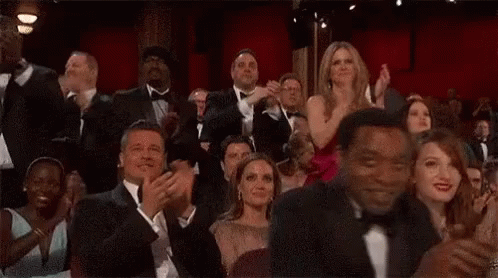Inspiration Struck!
After rewatching (for the second time) Ugly Betty (2006-2009), I particularly noticed their transition shots, used throughout the show. They were quirky and unique, such as the next scene being transitioned through columns coming down. Overall, the way the show was edited nods to the main character Betty Suarez, as she herself is quirky, different and fun; although, later in the show as she becomes more mature, you notice the editing/transitions shift into more general transitions, reflecting the difference in Betty herself.
That is why I found the show way more interesting, because you can tell how ALL aspects of production and post, relay the theme of a show/film. Down below is an example of how the show did their "columns coming down" or CCD (I just made that up, it is a bit of a tongue twister without the acronym) transition shots.
Another transition the show did is using what the characters had in their hand or in their surrounding and make it apparent in the next scene, or to close off a scene. For example in the episode "Bananas for Betty", it has a scene between Betty's boss (Daniel Meade) and Daniel's sister (Alexis Meade - who was once a man, but had a fake death to transition, to get back at their father, but Alexis and Daniel get into an accident, leading her to lose her memory and slightly get it back, now is more sympathetic with their dad, but then dad passes away - ok wow that was a lot). Due to the passing of their father (Bradford Meade), one of them was able to get the role of president of the magazine company [Meade publications] through a video (that cut out, coincidently). So, they decided that the role will be fought for, through a paintball war. Ultimately, Alexis won and the ending to that scene was not just a black screen, but rather the paintball splatter all around it as it closed off on Daniel's defeat.
[that paragraph was kind of an excuse to ramble about the show, just like how some people accidently use their business card for a simple purchase and have to film a video to write it off on tax reports.]
(POV: This is me looking at the homework I need to complete)^^
Why it's so cool...
Certain shots can reflect different genres. Again, I am going to use the paintball scene example, during the montage prior to the fight, it makes the comedy look like an action movie, with the close up shots in the "getting ready" portion and the slow-Mo with stare down. Or when show does certain scenes in the style of Spanish telenovelas, the quick zoom-ins and dramatic close ups, conveys the show to be as such. That is another reason as to why concocting films/tv shows is so difficult and requires much detail. All aspects of a shot, setting, story, makeup, costume, lighting, editing, make a film/show are needed to be convincing and entertaining. Making Ugly Betty a very unique show for its time (and now, it's really timeless).
some more examples on transition shots Ugly Betty used, is having one scene transition to a photo album in a next scene; having the NYC landscape wide shot transition to being part of Daniel Meade's coffee mug in a next scene; instead of a black screen, the scene ends through hearts all around the scene to portray Betty's emotion. And there is sooo much more, I really recommend this show for those interested in media analysis.
In my video...
All in all, this enabled me to think about transition shots I would like to use for my 2-minute film intro. At some points in the show (Ugly Betty), the camera represents the person for example, in the first/second episode, when Betty gets lunch from the Mode cafeteria, the camera is in her POV, with the plate in hand, while also seeing the reactions of her coworkers (which was combined of side eyes and stare downs because the girls at Mode do not eat much to "preserve their figure"). This will be incorporated into my video by having shots of the two characters looking into the camera as if they were looking at each other, and the important transition from positive to negative will be the characters holding the camera/phone looking into it as if they were to take picture, and when the flash occurs the female lead in the next scene will be holding a physical picture "taken" from the scene prior.
Hopefully I can masterfully achieve that. Tune in next time for the schedule of my 2-minute film intro and any updates. Thanks for reading!




No comments:
Post a Comment